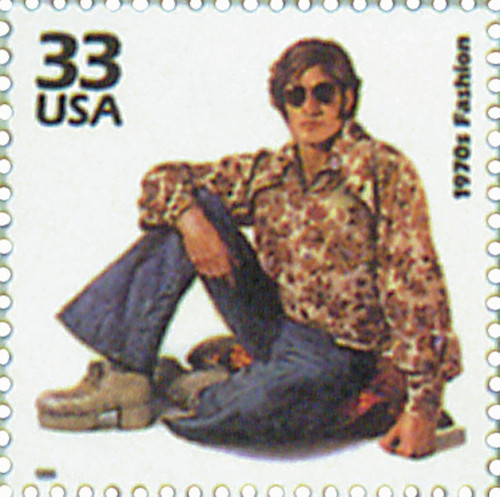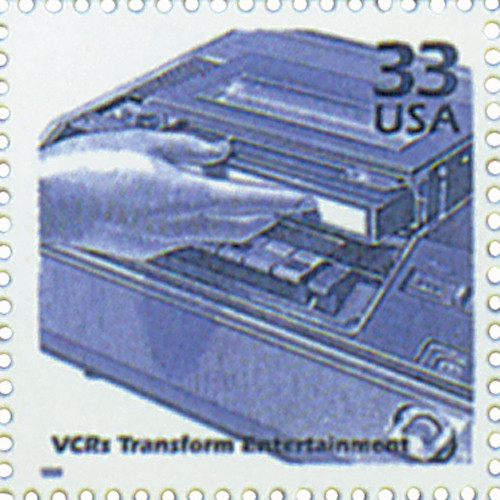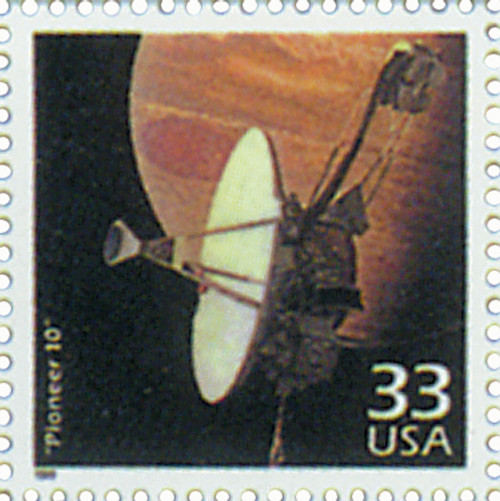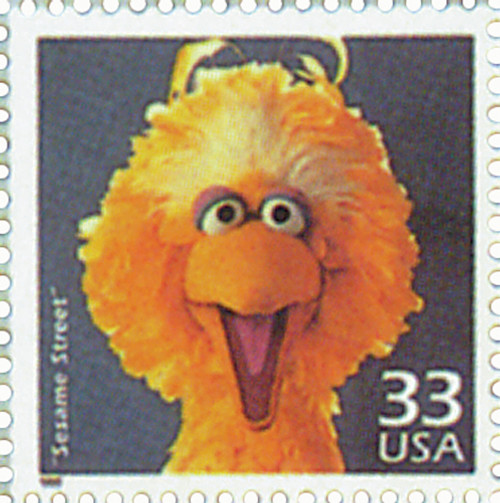
# 3189d - 1999 33c Celebrate the Century - 1970s: Disco
US #3189d
1999 Disco Music – Celebrate the Century (1970s)
• Part of the eighth sheet in the Celebrate the Century stamp series issued from 1998-2000
• Commemorates the rise in popularity of disco music
• Includes text on the back with historical details
Stamp Category: Commemorative
Series: Celebrate the Century
Value: 33¢ First Class Mail Rate
First Day of Issue: November 18, 1999
First Day City: New York, New York
Quantity Issued: 90,000,000
Printed by: Ashton Potter (USA) Ltd.
Printing Method: Offset, Intaglio
Format: Panes of 15
Perforations: 11.5
Tagging: Block tagging
Why the stamp was issued: To recall the phenomenon of disco music in the 1970s.
About the stamp design: Pictures artwork by Kazuhiko Sano of a couple at a disco club. Includes the following text on the back: “Powered by strong beats on records spun by disc jockeys, disco music got Americans dancing in the 1970s. Dressed up in polyester and silk, people “boogied” at nightclubs beneath colored strobe lights and mirrored balls.”
First Day City: The First Day of Issue Ceremony was held at the Postage Stamp Mega-Event at the Jacob K. Javits Convention Center in New York City.
About the Celebrate the Century series: The USPS launched the Celebrate the Century series in 1998 to mark the end of the 20th century and herald the arrival of the 21st. The series includes 10 sheets of 15 stamps (150 in total), with each honoring important moments from a different decade (1900s, 10s, 20s, 30s, 40s, 50s, 60s, 70s, 80s, and 90s). At the time of completion, it was the longest and most ambitious commemorative stamp series in US history.
History the stamp represents: Say the word “disco” and images of platform shoes, bell-bottom pants, and the Village People come to mind. During the 1970s, disco fever took over the United States. This popular dance music combines a fast jazz tempo with a heavy rock beat, and is often spiced with Latin percussion instruments. It was also influenced by the emerging technology of the time. Many styles of music popular today were influenced by disco.
America’s first disco club, the Whiskey-A-Go-Go, opened on Los Angeles’ Sunset Strip in 1964. Donna Summer (who sang “Last Dance”), the Bee Gees (“Stayin’ Alive”), KC and the Sunshine Band (“Get Down”), ABBA (“Dancing Queen”), and Rick James (“Super Freak”) are musicians who performed disco music.
The movie “Saturday Night Fever” (1978) helped solidify disco dancing as a national sensation. Written by New York magazine journalist Nik Cohn, it was the story of people who worked all week, anticipating their big night out at the disco on the weekend. Producer Robert Stigwood read the story when it was published in New York magazine in 1976. He recognized his new client, John Travolta, as a natural for the Italian disco-dancing main character. The smash-hit movie and soundtrack were released in 1978.
US #3189d
1999 Disco Music – Celebrate the Century (1970s)
• Part of the eighth sheet in the Celebrate the Century stamp series issued from 1998-2000
• Commemorates the rise in popularity of disco music
• Includes text on the back with historical details
Stamp Category: Commemorative
Series: Celebrate the Century
Value: 33¢ First Class Mail Rate
First Day of Issue: November 18, 1999
First Day City: New York, New York
Quantity Issued: 90,000,000
Printed by: Ashton Potter (USA) Ltd.
Printing Method: Offset, Intaglio
Format: Panes of 15
Perforations: 11.5
Tagging: Block tagging
Why the stamp was issued: To recall the phenomenon of disco music in the 1970s.
About the stamp design: Pictures artwork by Kazuhiko Sano of a couple at a disco club. Includes the following text on the back: “Powered by strong beats on records spun by disc jockeys, disco music got Americans dancing in the 1970s. Dressed up in polyester and silk, people “boogied” at nightclubs beneath colored strobe lights and mirrored balls.”
First Day City: The First Day of Issue Ceremony was held at the Postage Stamp Mega-Event at the Jacob K. Javits Convention Center in New York City.
About the Celebrate the Century series: The USPS launched the Celebrate the Century series in 1998 to mark the end of the 20th century and herald the arrival of the 21st. The series includes 10 sheets of 15 stamps (150 in total), with each honoring important moments from a different decade (1900s, 10s, 20s, 30s, 40s, 50s, 60s, 70s, 80s, and 90s). At the time of completion, it was the longest and most ambitious commemorative stamp series in US history.
History the stamp represents: Say the word “disco” and images of platform shoes, bell-bottom pants, and the Village People come to mind. During the 1970s, disco fever took over the United States. This popular dance music combines a fast jazz tempo with a heavy rock beat, and is often spiced with Latin percussion instruments. It was also influenced by the emerging technology of the time. Many styles of music popular today were influenced by disco.
America’s first disco club, the Whiskey-A-Go-Go, opened on Los Angeles’ Sunset Strip in 1964. Donna Summer (who sang “Last Dance”), the Bee Gees (“Stayin’ Alive”), KC and the Sunshine Band (“Get Down”), ABBA (“Dancing Queen”), and Rick James (“Super Freak”) are musicians who performed disco music.
The movie “Saturday Night Fever” (1978) helped solidify disco dancing as a national sensation. Written by New York magazine journalist Nik Cohn, it was the story of people who worked all week, anticipating their big night out at the disco on the weekend. Producer Robert Stigwood read the story when it was published in New York magazine in 1976. He recognized his new client, John Travolta, as a natural for the Italian disco-dancing main character. The smash-hit movie and soundtrack were released in 1978.














